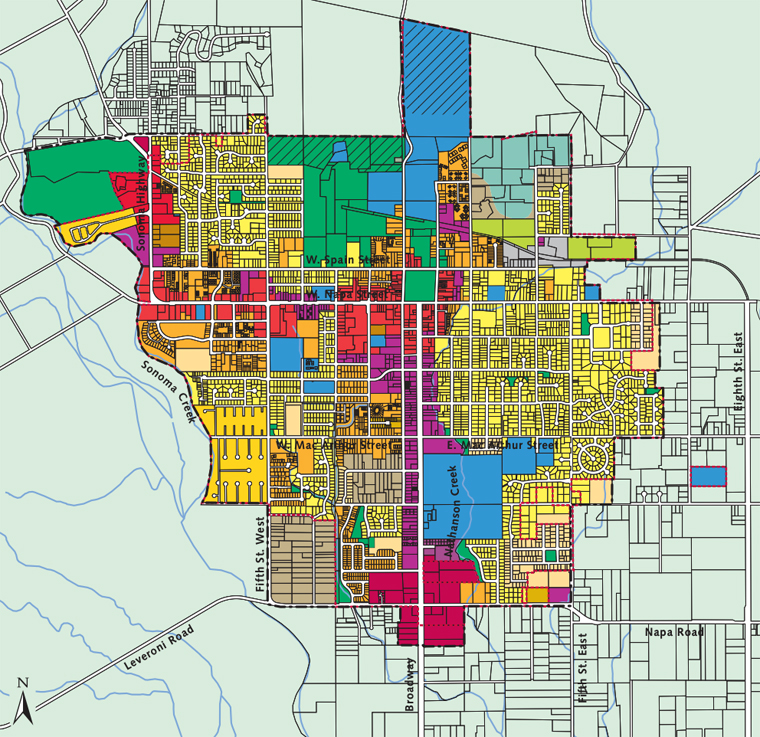
A surprising number of citizens are unaware of the history of Sonoma’s urban growth boundary, or UGB. An understanding of its history adds to one’s appreciation of the concept, and where it fits into the community’s land use and economic planning.
Sonoma was not the first, nor the last city in Sonoma County to establish a UGB. During my second term on the city council, I regularly proposed the council place the measure on the ballot, but without success. Finally, in the year 2000, having concluded that this would have to be a citizen-driven effort, I joined with others in drafting the UGB measure and placing it on the ballot. The UGB was fixed at the point of the city’s sphere of influence, and could only be enlarged for specific public serving uses and affordable housing. Councilman Brown joined me in signing the ballot measure in favor of the UGB.
At the time, the UGB was very controversial. Both the Sonoma Index-Tribune and the leadership of the Sonoma Valley Chamber of Commerce campaigned heavily against it, and numerous editorials appeared in opposition to its establishment. A public debate was held, in which I participated, and the audience was large. Proponents feared having Sonoma become another Petaluma. Opponents feared the stifling of economic opportunity. Ultimately, the measure was easily passed, with about 67 percent voter approval. Concurrently, an economic plan had been put into place by the council to generate higher revenues from the tourism sector; that revenue has grown from $200,000 a year ten years ago to over $2 million a year. The city now has the largest financial reserves in its history.
The UGB is all about scarcity and abundance. When land for annexation and sprawl was abundant, zoning was changed and Sonoma’s surrounding agricultural land was transformed into its largest housing and commercial developments. Since the planning and approval process often takes five years or more, the construction has lasted to this day. With the institution of the UGB, land for development within the city has become scarcer, and annexation and sprawl outside of our city boundary has stopped. Construction continues within our existing boundaries in accordance with our Growth Management Ordinance, which limits home construction to 88 units per year.
The end of sprawl does not end the state requirements for Sonoma to provide its fair share of housing. Sonoma, like every city, is required to have a workable plan to provide housing. The limited land available, though sufficient to meet that plan until the year 2020, must be used wisely. It also means that some parcels have higher density. Smart-growth planning uses higher density on specific parcels to enhance bike and pedestrian-friendly projects, and to provide some lower-cost housing to help maintain economic and cultural diversity in the community. When well designed, higher density projects can provide cohesive, attractive neighborhoods; the key point here is good design.
Scarcity increases the frustration of unmet desire. Private developers are now pushing for the expansion of the UGB to Eighth Street East for a “medical spa” with 60 “casitas.” They have opportunistically linked their fate to the need for a new hospital. Sonoma is a magnet for development, and development pressure, like air pressure, will always find the exploitable crack in the system. Ultimately, it’s all about money. To fully understand the impact of the UGB on private development, the wise citizen must always follow the money